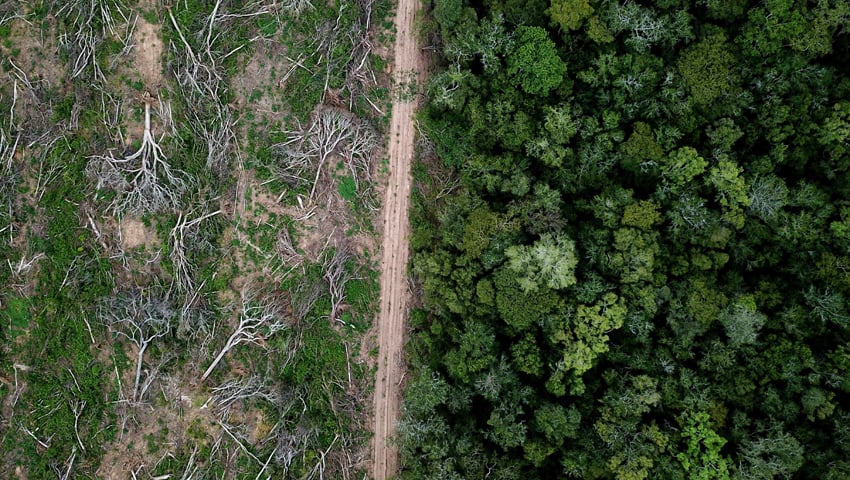A Princeton study reveals how the consumption of high-income nations drives biodiversity loss in other countries, responsible for over 13 per cent of all species range loss across the globe.
Biodiversity loss has accelerated at an alarming rate in recent decades, driven largely by human activities such as clearing forests to grow crops or harvest timber.
While countries often degrade ecosystems within their own borders through these activities, they also play a significant role in driving habitat loss overseas by outsourcing agricultural production, i.e., importing food or timber from other countries, thereby leading those other countries to destroy their forests to produce the exports. A Princeton study recently published in Nature quantifies for the first time the degree to which countries contribute to global biodiversity loss by shifting the environmental costs of their consumption abroad.
The data
The researchers examined the impacts of 24 high-income nations on 7,593 forest-dependent species of birds, mammals, and reptiles, integrating economic trade data, satellite-derived deforestation maps, and species range information spanning from 2001 to 2015. By integrating forest loss data with comprehensive maps of species ranges, the researchers were able to identify hotspots of severe biodiversity loss and quantify the proportion of each species’ habitat loss that can be attributed to the imports of each developed country.
Lead author Alex Wiebe, a doctoral student in the Department of Ecology and Evolutionary Biology, said, “Tracing the impacts that countries have on the environment outside of their borders is difficult to do. By combining satellite imagery with economic and biodiversity data, we are now able to measure and map exactly where countries impact species around the world for the first time.”
The outsized role of international impacts
According to the results, consumption-driven deforestation caused by the 24 developed countries importing timber or crops from outside of their borders was responsible for 13.3 per cent of global range loss experienced by forest-dependent vertebrates, in addition to the biodiversity loss they each caused domestically. On average, these countries caused international biodiversity losses 15 times greater than their domestic impacts, with the United States, Germany, France, Japan, and China being among the top contributors. Notably, 18 of the 24 countries observed in this study had higher international impacts than domestic impacts on biodiversity loss.
David Wilcove, co-author of the study and Professor of Ecology, Evolutionary Biology, and Public Affairs, said, “By importing food and timber, these developed nations are essentially exporting extinction. Global trade spreads out the environmental impacts of human consumption, in this case prompting the more developed nations to get their food from poorer, more biodiverse nations in the tropics, resulting in the loss of more species.”
The study’s findings also revealed how countries tend to have the largest impact on species in the tropical regions closest to them. For example, US consumption had the most significant impact on wildlife in Central America, while China and Japan’s consumption strongly affected species in the rainforest regions of Southeast Asia.
Additionally, the results highlighted the detrimental impacts of international trade on endangered species. According to the study, 25 per cent of critically endangered species had over half of their range loss stem from international consumption during the study period.
Wiebe said, “By increasingly outsourcing their land use, countries have the ability to affect species around the world, even more than within their own borders. This represents a major shift in how new threats to wildlife emerge.”
Meanwhile a separate Princeton-led study – Variable impacts of land-based climate mitigation on habitat area for vertebrate diversity – found that habitat loss from afforestation and bioenergy cropping typically outweighs the climate mitigation benefits.
The authors write that, “Pathways to achieving net zero carbon emissions commonly involve deploying reforestation, afforestation, and bioenergy crops across millions of hectares of land. It is often assumed that by helping to mitigate climate change, these strategies indirectly benefit biodiversity. Here, we modelled the climate and habitat requirements of 14,234 vertebrate species and show that the impact of these strategies on species’ habitat area tends not to arise through climate mitigation, but rather through habitat conversion.
“Across locations, reforestation tends to provide species more habitat through both land-cover change and climate mitigation, whereas habitat loss from afforestation and bioenergy cropping typically outweighs the climate mitigation benefits. This work shows how and where land-based mitigation strategies can be deployed without inadvertently reducing the area of habitat for global biodiversity.”
Read the studies:
- Global biodiversity loss from outsourced deforestation
- Variable impacts of land-based climate mitigation on habitat area for vertebrate diversity
